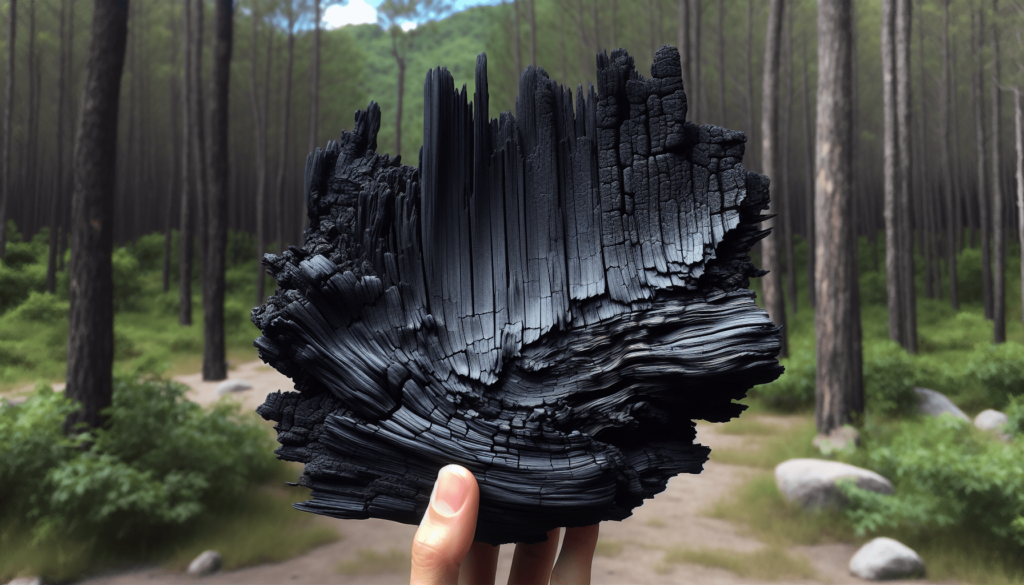What is a word for burnt wood? I’ve been puzzling over this one lately, not unlike the time I spent last Tuesday afternoon trying to remember the name of that actor who was in everything in the 90s but somehow slipped out of everyone’s mind (no, really, who was it?). There’s something fascinating about how words carry such specific meanings and nuances, isn’t there?

Charcoal – The Familiar Burnt Wood
Charcoal probably jumped into your mind first. Let’s face it, we use it all the time, especially if you’ve ever attempted to impress friends with your grilling prowess. Charcoal is essentially wood that’s been burnt in a way that removes water and volatile gases, leaving behind almost pure carbon. You find it in art studios, where it smudges beautifully on canvas, and in barbecues, where it brings a fiery snap to your ribs.
Types of Charcoal
Charcoal isn’t a one-size-fits-all kind of thing. There are varieties, and each serves a distinct purpose:
| Type | Description | Use |
|---|---|---|
| Lump Charcoal | Natural, burns cleanly, fewer additives | BBQ grilling |
| Briquettes | Consistent shape, burns longer, often with additives | Long cookouts, everyday grilling |
| Activated Charcoal | High absorption capacity, very porous | Water filtration, detox products |
Now, I first became acquainted with lump charcoal during a somewhat misguided camping weekend. Think raccoons, charred marshmallows, and a tent that refused to cooperate. Still, nothing compares to the taste of food grilled over natural lump charcoal.
Ash – What’s Left Behind
Have you ever looked at the remnants of a campfire the morning after and wondered what to call that soft, gray powder? That’s ash, my friend. Ash, unlike charcoal, is the final stage in the life of burnt wood. Once all the wood has been consumed by fire, it leaves behind ash. It’s usually composed of mineral residue that didn’t burn away.
Uses of Ash
Believe it or not, ash has its utility too. It’s not merely the sad leftovers of last night’s epic bonfire:
| Use | Description |
|---|---|
| Fertilizer | Adds potassium and lime to the soil |
| Cleaning agent | Can be used to make lye, an ingredient in soap |
| Ice control | Ash can be sprinkled on icy patches for traction |
Funny story: I once used ash to try and clean an old copper pot. My grandmother swore by it, though I suspect she also thrived on watching me struggle to scrub the tarnish off.
Soot – The Unwanted Guest
Soot might be the least loved name for burnt wood. This fine black or brown powder consists of amorphous carbon and sometimes traces of metals. If you’ve ever had the misfortune of cleaning a chimney (I do not recommend this as a weekend activity), you’ll know soot intimately.
Problems Associated with Soot
Dealing with soot isn’t all fun and games—even though “fun” and “soot” rarely belong in the same sentence:
| Issue | Description |
|---|---|
| Health Hazard | Can cause respiratory issues when inhaled |
| Dirty Residue | Leaves stubborn stains on surfaces |
| Fire Risk | Highly flammable, can cause chimney fires |
When my neighbor’s chimney caught fire last winter due to a soot build-up, I realized that soot, unlike ash or charcoal, is the unruly teenager of burnt wood. It requires constant attention and can cause all sorts of trouble if you turn your back for even a moment.
Pyrolysis – The Science Behind It All
Now, for the science buffs among us—and let’s be honest, who doesn’t love a good scientific explanation—there’s pyrolysis. Pyrolysis is the thermal decomposition of materials at elevated temperatures in an inert atmosphere. Simply put, it’s the process that wood goes through to become charcoal, ash, or soot, depending on the circumstances.
Stages of Pyrolysis
Wood doesn’t just turn into burnt wood willy-nilly; there’s a method to the madness:
- Dehydration: Water content evaporates.
- Decomposition: Cellulose breaks down, emitting various gases.
- Carbonization: After volatile components leave, what’s left is a carbon-heavy material.
I remember the first time I heard the word “pyrolysis.” It was from a friend who moonlighted as an amateur chemist. He tried explaining it over dinner, somehow tying it into the cooking process of our chicken. Needless to say, I was more focused on not burning the bird than truly understanding the science at that moment.

Creosote – The Sticky Situation
Creosote is another byproduct that deserves mention. It’s a tar-like substance formed when fireplace or wood stove smoke condenses in chimneys. Its sticky nature makes it a menace to clean, much like trying to wrestle an octopus (which I also don’t recommend).
Hazards of Creosote
Living with creosote in your chimney is like having an unwelcome houseguest that you just can’t kick out:
| Hazard | Description |
|---|---|
| Flammability | Highly flammable, increasing the risk of chimney fires |
| Corrosive Nature | Can damage metal flue liners and mortar in chimneys |
| Toxic Fumes | Emits dangerous fumes which can affect indoor air quality |
One particularly chilly winter, I found myself enlisting a chimney sweep to tackle a creosote problem. The sweep had a fascinating array of tools and a treasure trove of stories involving trapped birds, misplaced pets, and more soot-covered moments than you’d think possible.
Cinders – Hot Stuff
Next up, there’s cinders. These are the partially burned wood that still retains a bit of shape and glow like miniature furnaces. Often found among the ash in your fire pit, cinders still hold some heat and can reignite if given the right conditions.
Importance of Managing Cinders
Managing cinders is about ensuring you’re not accidentally setting your backyard ablaze:
| Point to Note | Explanation |
|---|---|
| Safety | Always douse cinders with water before disposal to prevent fire hazards |
| Heat Retention | Useful in campfires to maintain heat after flames subside |
| Soil Amendment | Like ash, cinders can also be used to improve soil quality |
Backyard bonfires with friends usually end with me poking around the cinders, convincing myself I’m one of those survivalist TV show hosts. Inevitably, someone suggests making s’mores just as the cinders start fading.
Categories of Burnt Wood Terms
So many terms exist for burnt wood—more than you’d think would come from something as simple as setting wood on fire. To better understand, let’s categorize them:
| Category | Terms |
|---|---|
| Charred Wood | Charcoal, Cinders |
| Residue | Ash, Creosote, Soot |
| Processes | Pyrolysis |
Historical Use of Burnt Wood
Burnt wood has also had historical utilities, serving as more than just the aftermath of a cozy fire. Ancient civilizations used charcoal for everything from melting metals to medicinal purposes. Ash has found utility in agriculture for centuries, and let’s not forget the old-timey recipe for soap made from lye (lye itself derived from ash) and animal fat.
Psychological Effect
Is it just me, or does observing burnt wood have a somewhat hypnotic effect? The movement of dancing flames, the subtle hissing sounds, even the changing colors—all contribute to a sense of primal fascination. Scientists suggest that our ancestors’ reliance on fire for survival might make us inherently drawn to it.
Funny enough, the only science I remember from high school involved an attempt to create a small controlled burn in a science experiment. To this day, the smell of burning wood takes me back to that botched trial in Mr. Thompson’s chemistry class.
Modern Alternatives and Innovations
In today’s world, we’ve gotten creative with our use of burnt wood. Beyond the traditional applications in cooking and art:
Biochar – A Modern Twist
Biochar is essentially charcoal used as a soil amendment but produced in a more controlled, environmentally friendly manner.
| Advantage | Description |
|---|---|
| Carbon Sequestration | Helps capture and store carbon |
| Soil Health | Improves water retention, nutrient availability |
| Renewable Energy Source | Can be used to generate renewable energy |
I met a guy at a farmer’s market who was all about biochar. His enthusiasm for soil amendments made me envy his passion, even if I had zero inclination to dive into composting.
Conclusion
So, what’s in a word for burnt wood? Quite a lot, it turns out. From charcoal and ash to soot and creosote, each term brings its own history, utility, and quirks. The next time you find yourself staring into the embers of a dying fire, let your mind wander through the fascinating universe of burnt wood. Just maybe keep a fire extinguisher within arm’s reach, for convenience’s sake.

